"CRAFT TOURISM ECHIZEN" A Trip to Search for "Specialties of Echizen" You'll Want to Tell Someone About

A trip to have people with various backgrounds feel the climate of Echizen City. This time, we asked Sayaka Sawano of "KUMU Kanazawa" and Reina Saito of "TAKIGAHARAFARM" who work at a hotel in Ishikawa Prefecture, next to Fukui Prefecture, to talk about manufacturing in Echizen. Experience it.
The two of them usually greet many tourists who visit Hokuriku, but surprisingly they have hardly ever been to Echizen City. "By discovering the charm of this town while traveling on our own, we hope to use it as hints for sightseeing in the future."
Hokufu Station
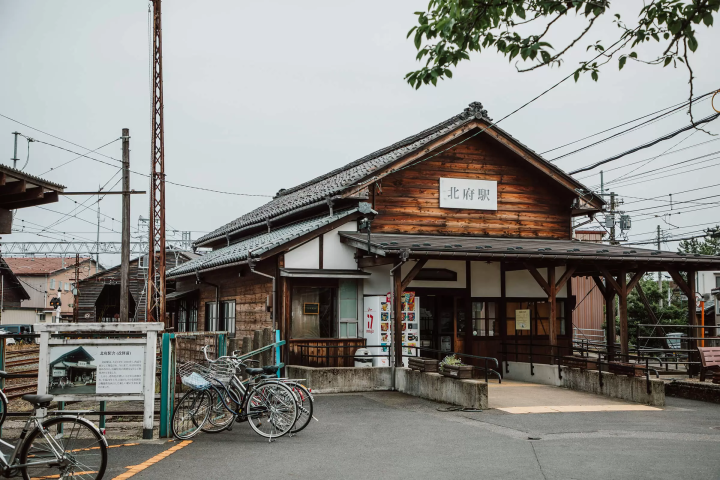
The first place they came to was Kitago Station on the Fukui Railway. The name of the station, Hokufu, comes from its location on the north side of the former Echizen Kokufu (North of Kokufu → Kita Kokufu). The station building, which retains the retro atmosphere of the Taisho era, has also appeared in a mobile phone commercial and became a hot topic. It is a rare unmanned station now, and the inside of the station building is a museum with about 120 valuable materials of Fukui Railway on display.
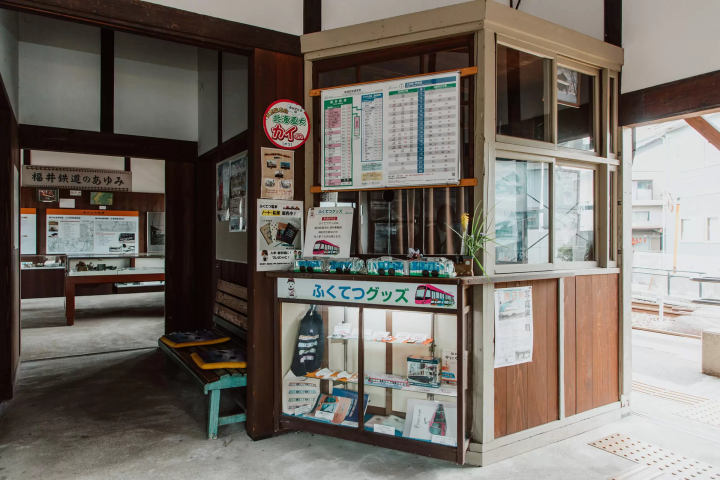
The vicinity of the ticket gate and the waiting room are also tasteful, with traces of the old days. In 2013, the station building was designated as a registered tangible cultural property of Japan.
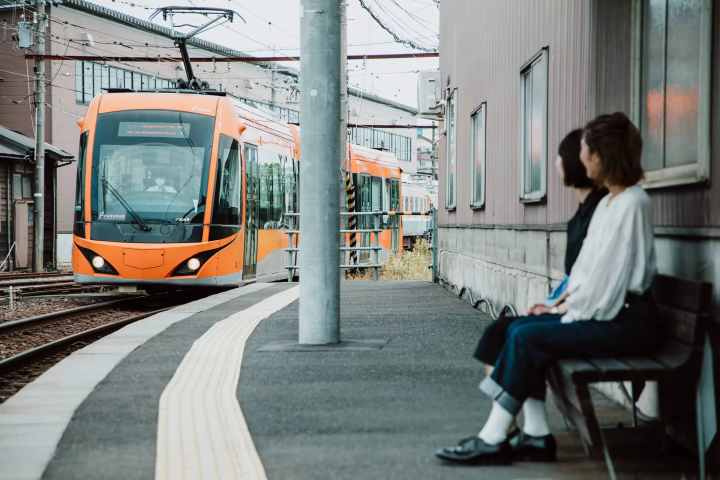
Two cute cars arrived at the station. The train is nicknamed "FUKURAM", and the vivid orange color is a bright color that seems to wipe out the Hokuriku winter.
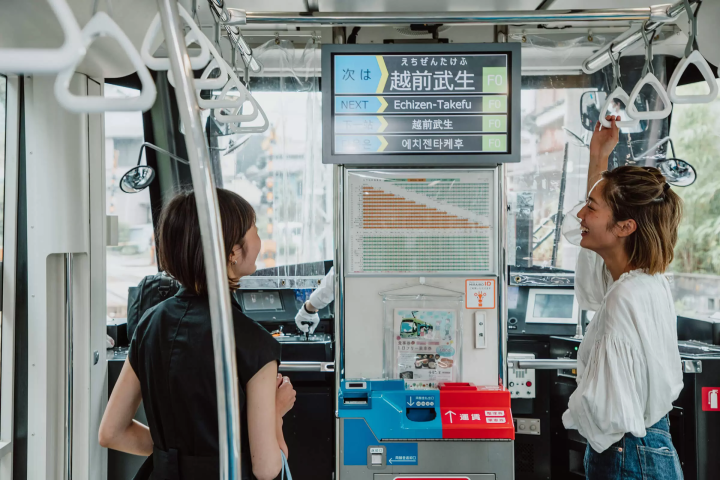
The Fukui Railway, which slowly progresses one station at a time, is an important means of transportation for local residents who commute to school or work. If you use it, you may be able to touch the local life a little.
The two are already excited, saying, "There's something different about a car, isn't there?"
https://www.echizen-tourism.jp/travel_echizen/visit_detail/45?
happy pink taxi
We arrived at our destination, Echizen Takefu Station. From here, it's finally time to explore Echizen City, but I definitely recommend using a fixed-price taxi. If you purchase a boarding pass in advance, you can ride anywhere in Echizen city for 500 yen once.
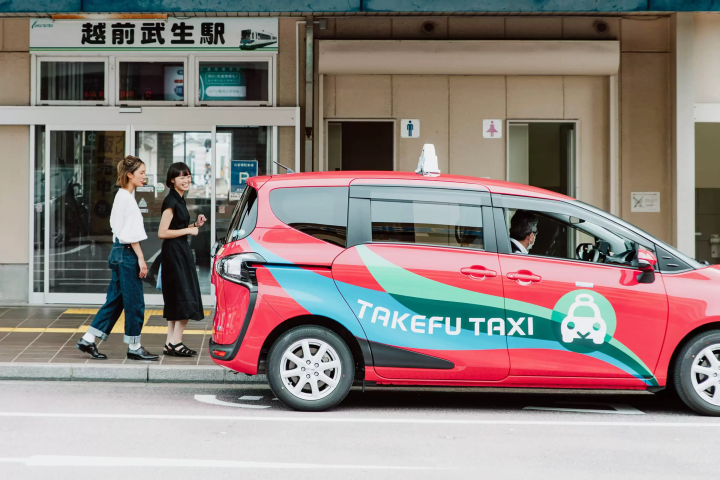
After exiting the ticket gate, I was able to meet a rare pink taxi. This taxi, which runs only one in the city, is commonly known as the “taxi that carries happiness”. If you are lucky enough to be able to ride it, lucky things may or may not happen... (laughs). Let's take a taxi and head to our next destination.

Papyrus Hall
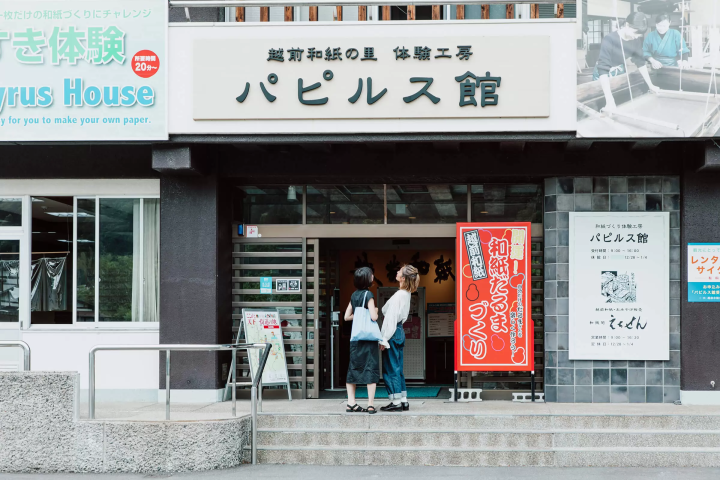
Next, we visited the Echizen Washi no Sato Papyrus Museum, which is about 15 minutes by car from JR Takefu Station and Echizen Takefu Station. Speaking of Echizen Washi, it is one of the traditional crafts that have been handed down in Echizen City for a long time. At the papyrus pavilion, you can experience making paper, and you can make only one piece of Japanese paper in the world.
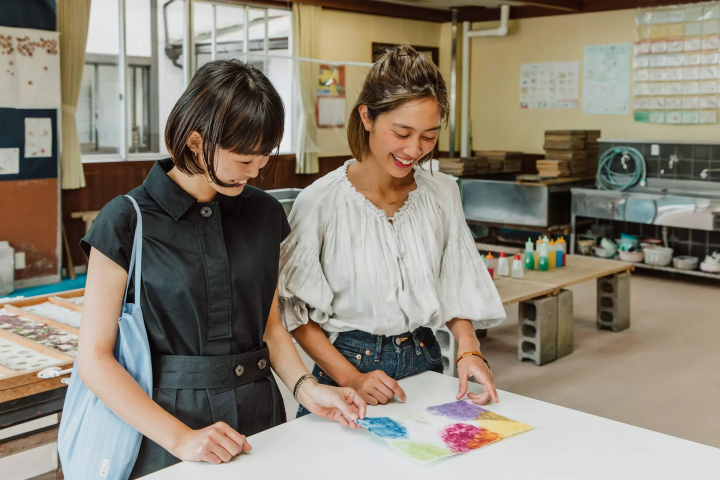
It was the first experience for both of them to make paper. "I wanted to try it once before," he said happily.
At the Papyrus Museum, the two challenge themselves to create their own ema using Echizen washi paper. The staff will teach you how to make paper.
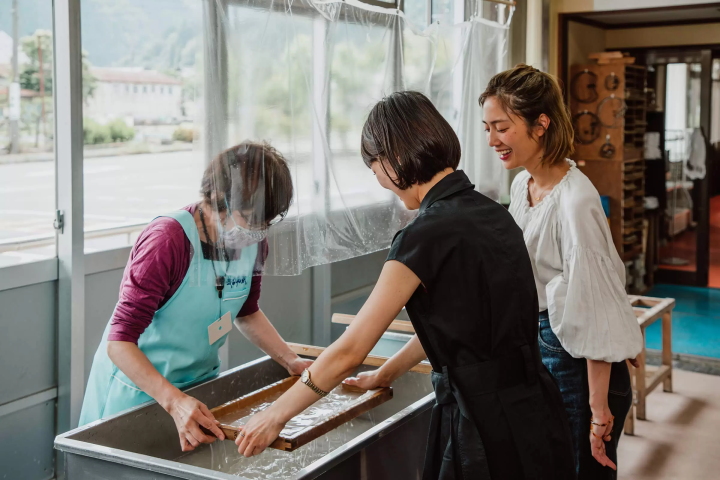
The fibers of the kozo plant are mixed with a highly viscous plant that acts as an adhesive, and they are scooped up in wooden frames called keta.
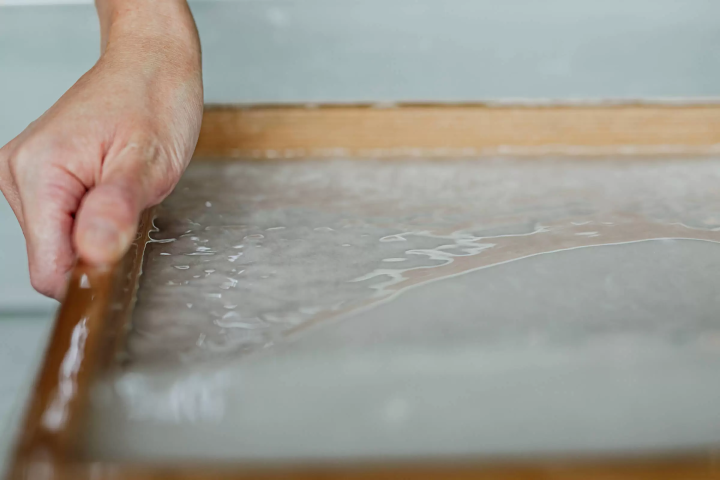
Shake the girder vertically or horizontally... The trick is to shake it so that the fibers get entangled.
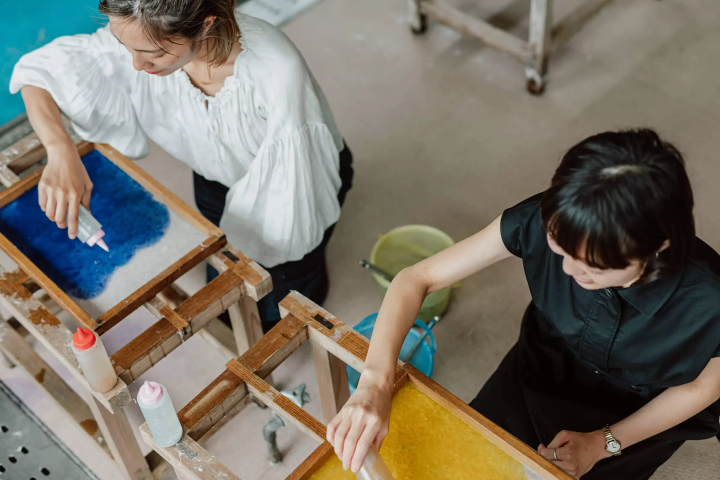
We will add color to the paper that has been made. Reina chose a blue that reminded me of the night sky, and Aya chose a bright yellow.
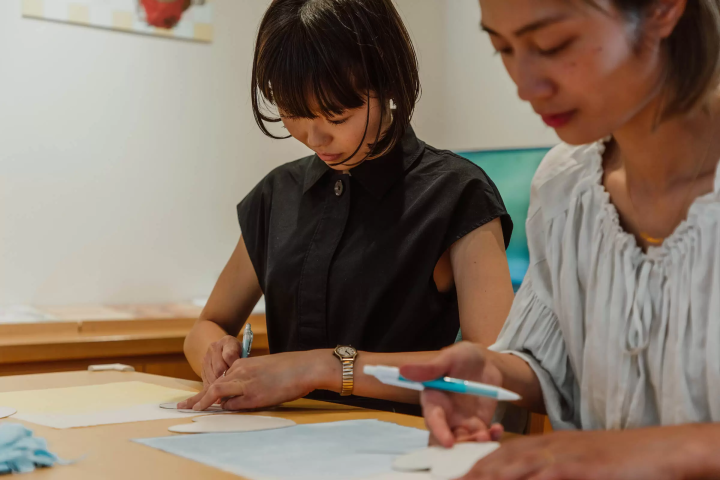
After coloring, put it in the dryer and the Japanese paper is completed in no time. From here, the votive picture is cut out by hand.
Washi paper is strong, so it seems that it takes more power than expected to cut it out. They both have serious expressions.
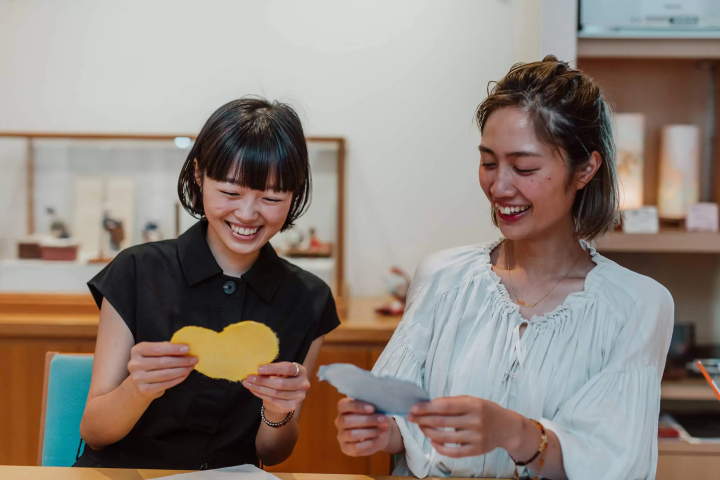
The ema is said to be in the form of "Inome," which is a talisman for the power of the beast's eyes. At first glance, it looks like a heart-shaped ema, but when you paste fluffy Japanese paper on it, it becomes a cute finish. Finally, write your wish and you are done.
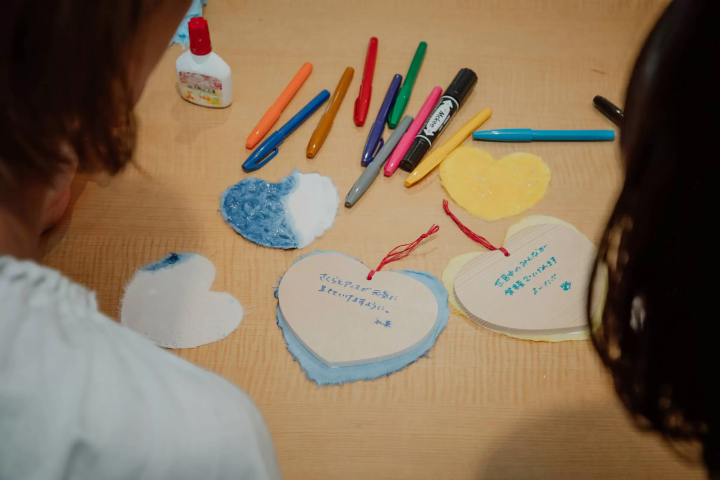
https://www.echizenwashi.jp/facility/papyrus/
Okamoto Shrine/Otaki Shrine
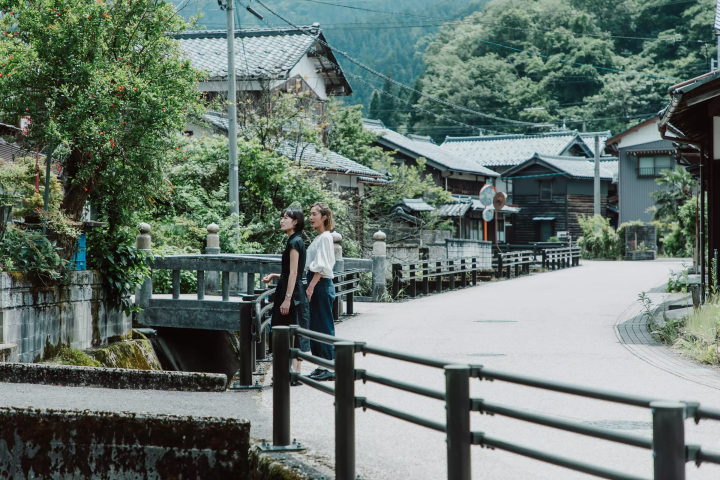
Take a walk through the Japanese paper village with the ema you made. The Goka district, which consists of Otaki-cho, Iwamoto-cho, Oizu-cho, Sadatomo-cho, and Shinzaike-cho, is home to many Japanese paper manufacturers, centered on the Okamoto River that flows through the town. I'm here. The elegant streets lined with traditional Japanese houses are perfect for taking a leisurely stroll.

After walking about 15 minutes from Papyrus Museum, we arrived at Okamoto Shrine/Otaki Shrine. This shrine, which is said to be indispensable when talking about the history of Echizen washi, enshrines the god of paper.
About 1,500 years ago, a beautiful princess appeared in the upstream of the Okamoto River and taught the villagers how to make paper, saying, ``If you use the clear river water of this village and make paper for a living, you will have a good life.'' yes.
This is said to be the birthplace of Echizen washi paper, and since then, this princess has been enshrined as the paper ancestor god, Kawakami Gozen.
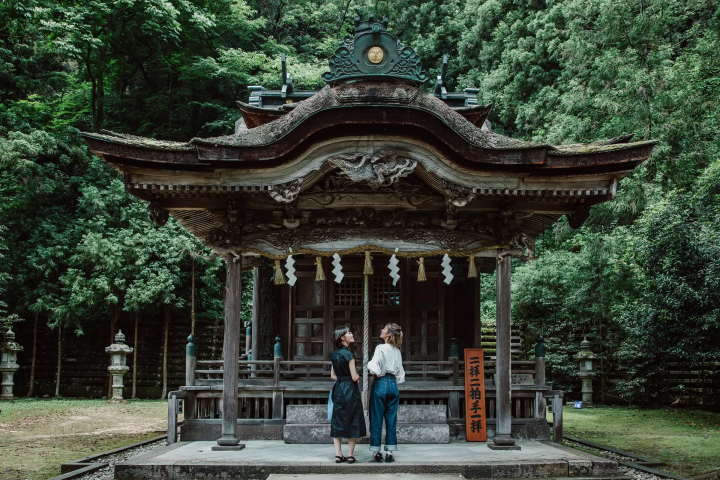
As soon as you set foot in the precincts, dignified air flows. The sacred atmosphere makes both of us straighten our spines.
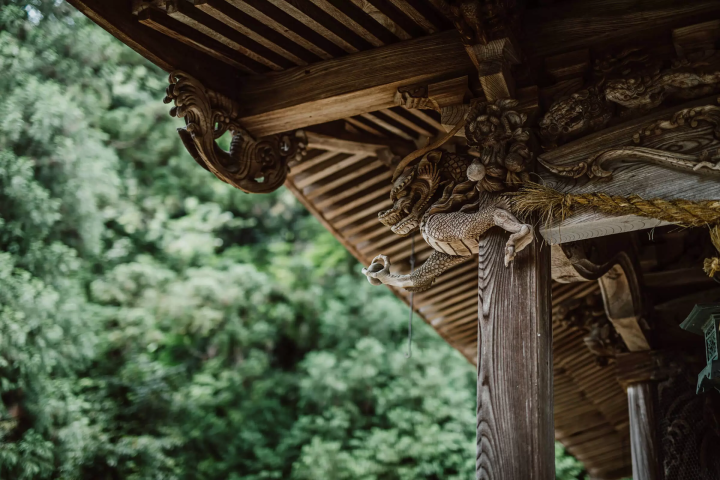
The intricate carvings of the main shrine building were created by Kanzaemon Okubo, a temple carpenter who created the imperial envoy gate of Eiheiji Temple, a famous temple in Fukui Prefecture. It is an appearance that makes you want to forget the time and stare at it.
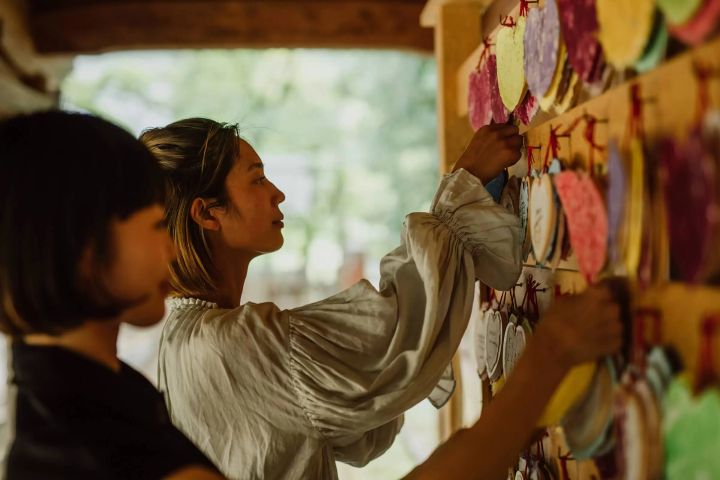
The Ema you made earlier will be dedicated to the Ema hanging in the precincts of the shrine. “I am thrilled to be able to experience craftsmanship that has been handed down in this land in the holy land of Echizen washi,” says Reina. “By learning about the roots of Japanese paper, my memories have deepened even more,” said Aya.
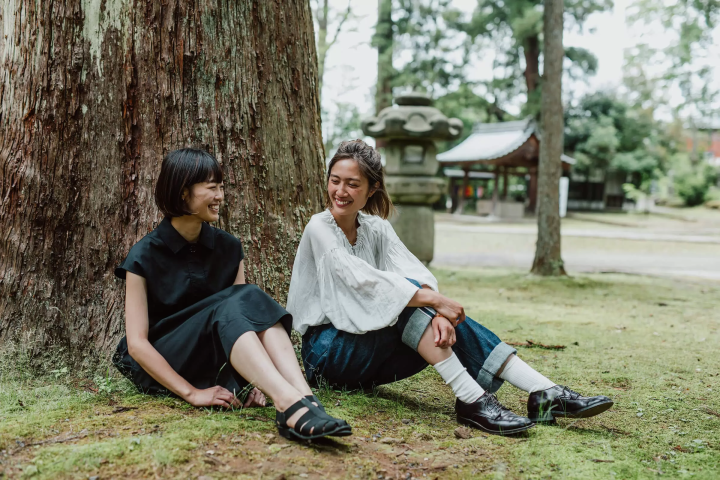
https://www.echizen-tourism.jp/travel_echizen/visit_detail/36?
Echizen Soba no Sato
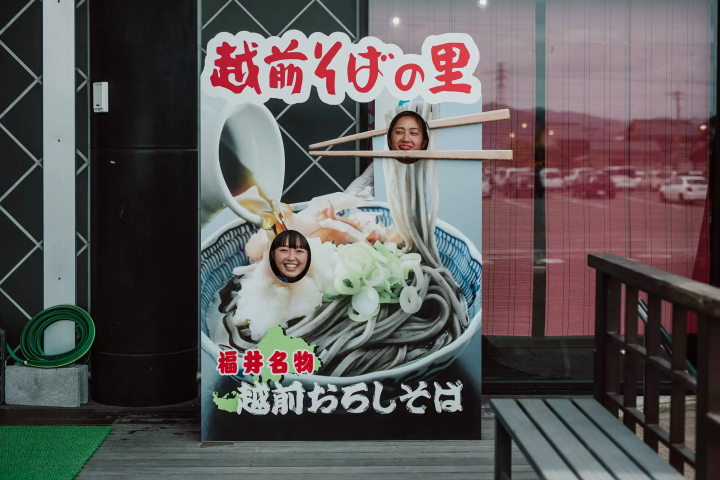
Jajan! The next place is "Echizen Soba no Sato", about 3 minutes by car from Hokuriku Expressway Takefu IC. This is a facility where you can enjoy Echizen soba as a whole, not only by eating, but also by visiting the soba factory and making soba noodles. In the spacious hands-on workshop, everyone from children to adults can experience making authentic Echizen grated soba noodles. “My dream is to open a soba restaurant in the countryside someday, so I always wanted to make soba,” says Aya. The two of us will try making soba for the first time.
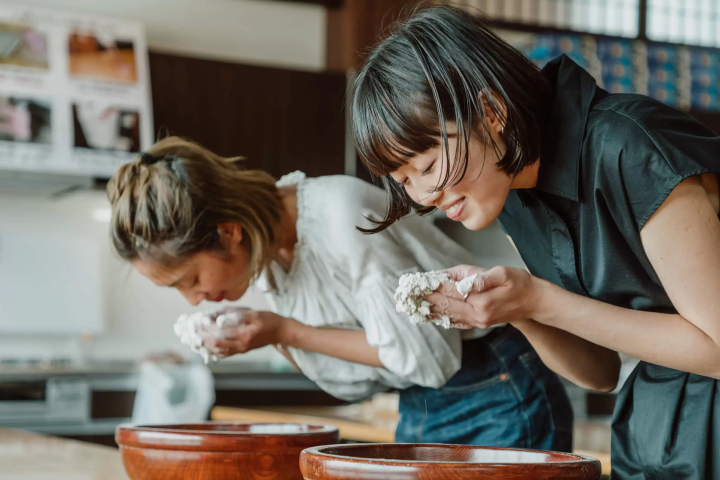
First, we add water to the buckwheat flour and perform “water turning”. At Echizen Soba no Sato, buckwheat is cultivated at a directly managed farm. "Soba has such a nice scent," he enjoys the fresh scent.
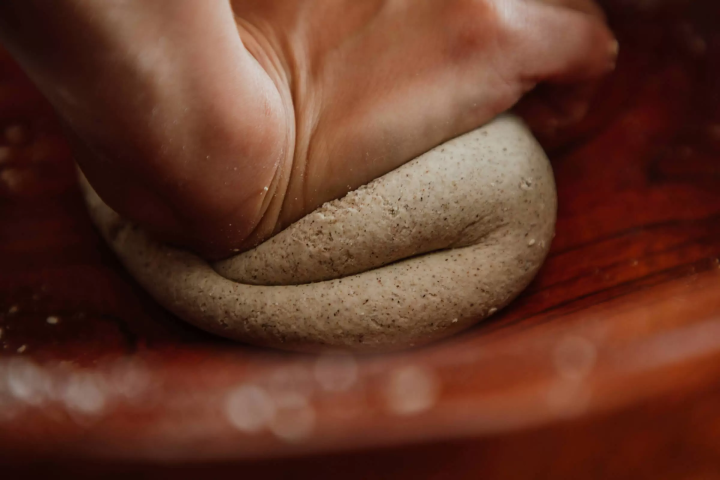
Buckwheat flour oxidizes as soon as it is taken out of the bag, so kneading quickly is the key to a delicious finish. Reina, who usually makes bread, kneads the dough in a familiar manner.
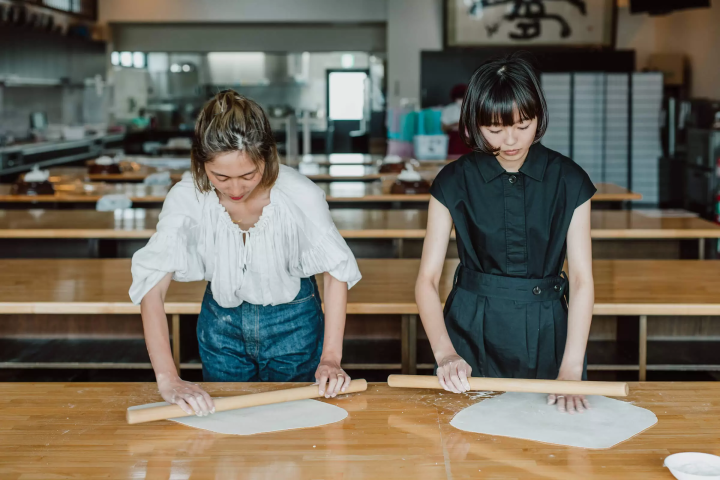
After thoroughly kneading the dough, rotate it to stretch it evenly into a square. Aya's hobby is making dumplings. The skin is also handmade, so stretching the dough is a skill. Roll out the dough into a clean square.
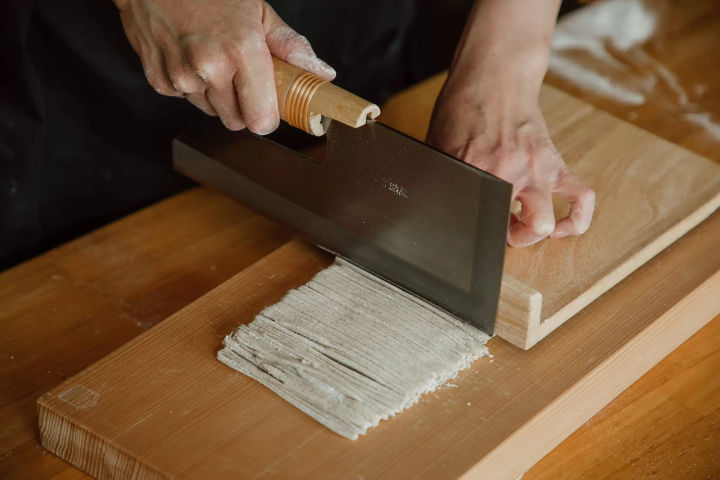
The evenly stretched dough is carefully folded and cut with a soba knife. The kitchen knife is a traditional Echizen cutlery made in this area. It is difficult to cut to a certain thickness, but the good thing about hand-cutting is that it is uneven.
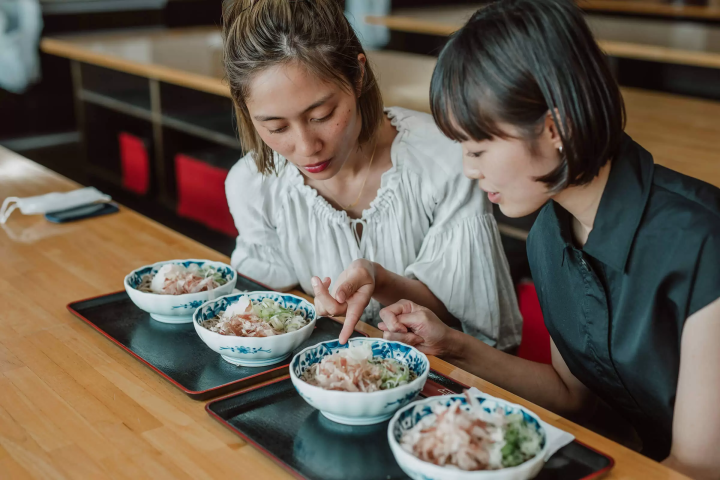
You can boil the soba on the spot and eat it as grated soba. "The taste of the soba we made ourselves is exceptional!"
https://www.echizensoba.co.jp/
Marshmallow
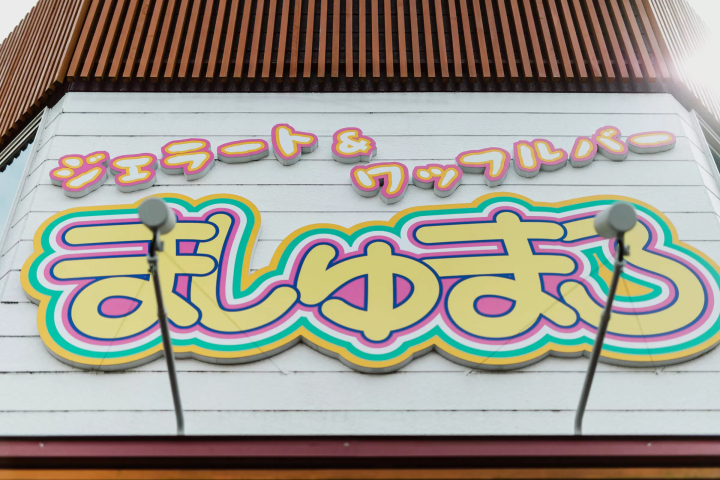
After eating handmade soba, it's snack time. Next, I came to Marshmallow, which opened in April 2021, located about a 5-minute walk from JR Takefu Station.
The shop owner's desire is to "enjoy delicious food for children and locals so that the town doesn't feel lonely". I'm here.
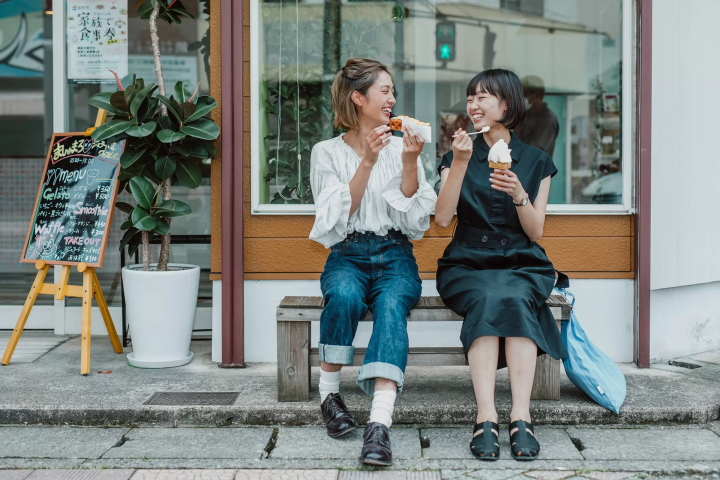
Reina ordered a lemonade gelato, and Aya ordered a yogurt cream and pineapple waffle. All of the items on the menu can be eaten with one hand, so they are perfect for walking around town.
https://www.instagram.com/masyumaro0402/
Koyanagi chest of drawers
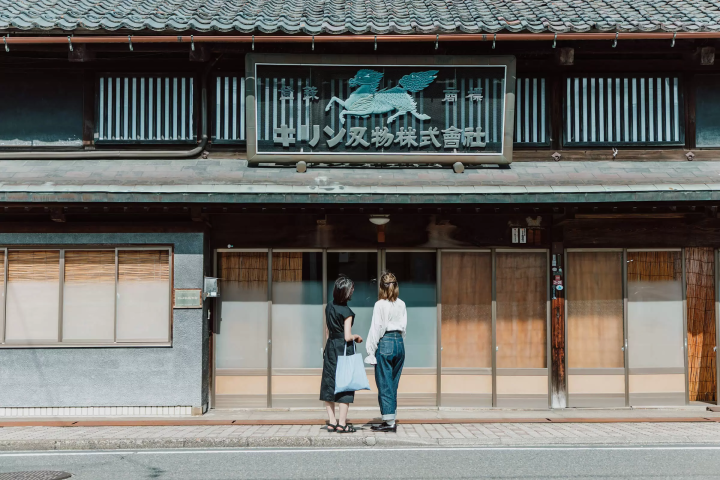
It takes about 5 minutes to walk further from "Marshmallow". I came to "Tansumachi Street". There are more than 10 Japanese and Western furniture dealers on the 200-meter street.
Echizen chest of drawers, for which the technique has been nurtured since the late Edo period, was designated as a traditional craft in 2013, following Echizen cutlery and Echizen washi paper. A major feature is that wood such as zelkova and paulownia is processed using a unique joinery technique and decorated with metal fittings and lacquer.
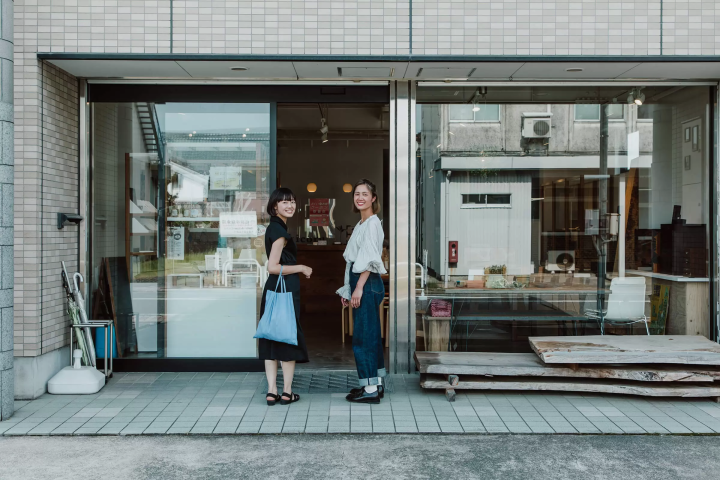
The last place we visited was “kicoru” on Tansu Machi Street. Koyanagi Tansu, a long-established Echizen chest of drawers that has been in business for over 100 years, opened its atelier in 2014. In addition to exhibiting custom-made furniture using traditional chest techniques and collaborative works with designers, workshops are also held. going.
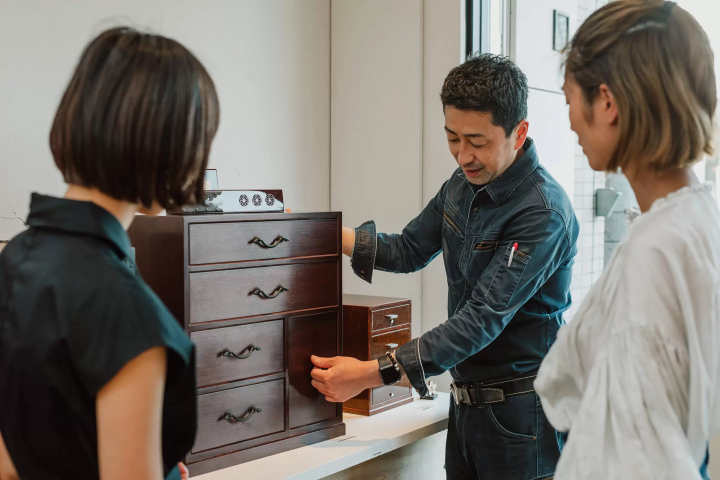
Mr. Norikazu Koyanagi, the fourth generation, will teach us about the techniques of Echizen Tansu. It's an ordinary drawer, but it's actually full of tricks. It seems that there are also complicated tricks such as the key is not easy to open, and the drawer is hidden under the drawer.
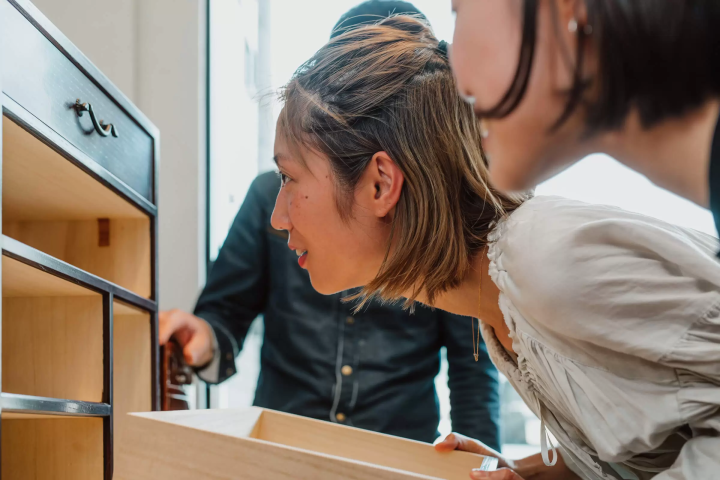
"Amazing! I want to tell someone about this," said Reina, who was very excited.
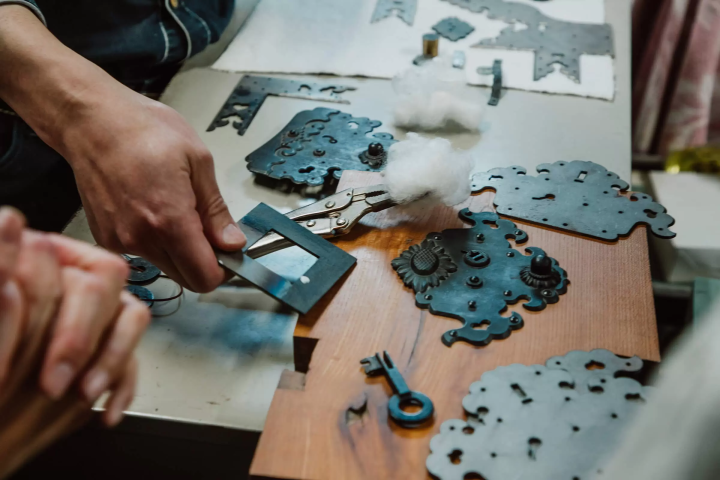
There is also a secret in the metal fittings attached to the Echizen chest of drawers. “This is meant to ward off evil spirits. The cloud-like design is inspired by the Nyoi stick that appears in Journey to the West. It means that it will come true. The wardrobe is a talisman that protects the family,” says Koyanagi.
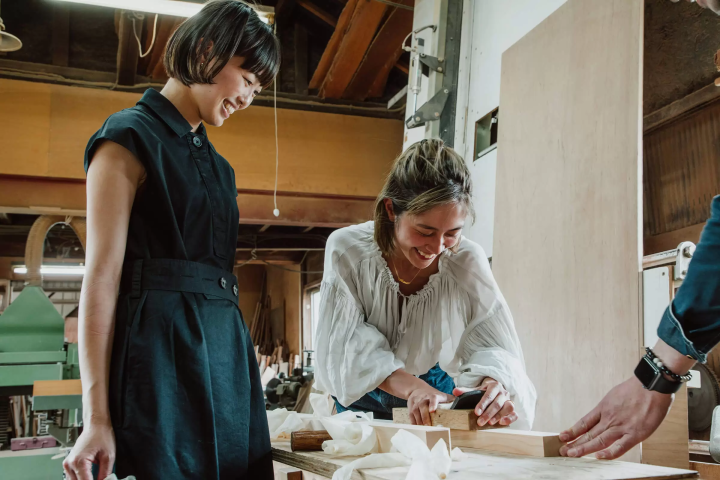
I also experienced the planing of wood, which is indispensable for making chests of drawers. When Mr. Koyanagi uses a planer, it is scraped off smoothly, but when he tries it, it does not go well. Both of them were overwhelmed by Mr. Koyanagi's skill, saying, ``By combining each technique, you can create a highly complete Echizen chest of drawers.''
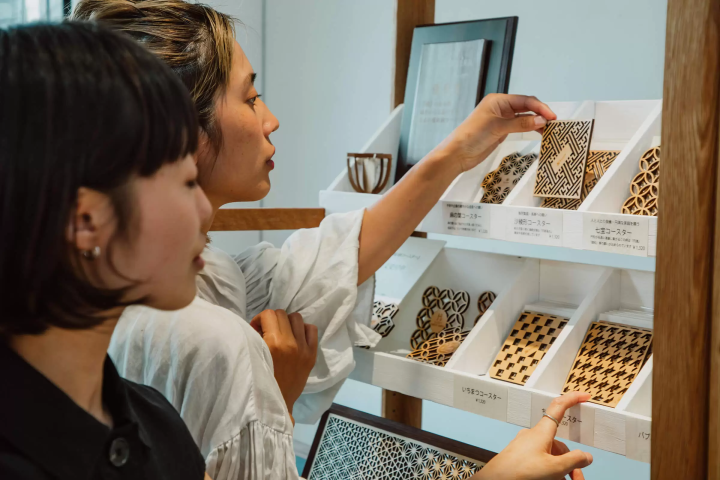
At the end, we bought a coaster with a traditional design using the technique of Echizen chest of drawers as a souvenir, and the trip to Echizen came to an end. What were your impressions of this trip? “Echizen washi paper, Echizen chest of drawers, and Echizen soba noodles have their charms that you can understand only by experiencing them. "The townscape was different from where I usually live. I would like to come again, and I would definitely recommend it to anyone who comes to the hotel." was.
Echizen wisdom ~Proposing a new tourism, a journey of wisdom.~ A town that has inherited the skills and spirit of its predecessors for 1,500 years. Echizen, the entrance to the "Koshi no Kuni" ruled by an ancient king. A place of wisdom where cutting-edge technology and culture first flowed in from across the Sea of Japan and became the origin of Japan's profound manufacturing. In the traditional industries that coexist with the nature of the land and in the people who live here, the universal wisdom that human beings want to bring to the next 1000 years is alive. Here and now, there is a future born from exchanges that transcend national borders and time and space. A new quest to find light. Welcome to Echizen.
The contents on this page may partially contain automatic translation.































![[Coupon Available] Attention Overseas Winter Sports Fans! Nagano's Sports Depot Has Evolved](https://resources.matcha-jp.com/resize/720x2000/2026/01/05-254819.webp)
![[2 hours from Tokyo ] 10 Quiet and Breathtaking Views of Mount Fuji in Yamanashi Hokuto City , Yamanashi - Part 2](https://resources.matcha-jp.com/resize/720x2000/2025/12/16-253037.webp)

![[Reopening in March 2026] Ikoma Sanjo Amusement Park Park, 45 minutes from Osaka , with free admission](https://resources.matcha-jp.com/resize/720x2000/2024/08/28-194409.webp)